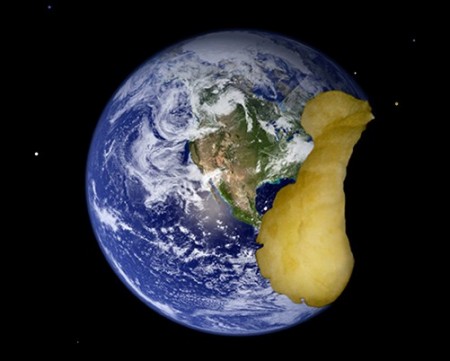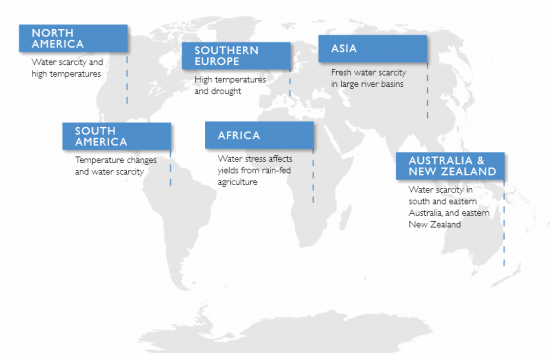May 19, 2016 – To adapt to temperature rises of 2 Celsius we will have to change the way we produce food. That has economic consequences. The most likely one we are already seeing here in supermarkets in Canada resulting from California’s prolonged drought and its impact on so many imported fruits and vegetables. At one point this winter cauliflower was worth the price of gold, and apricots and walnuts more than doubled in price. In a country like Canada a good portion of the population can absorb these price increases or abstain from purchasing the products. But when food prices double in Developing World countries it is the poor who suffer.
In a new report entitled ERISC Phase II: How food prices link environmental constraints to sovereign credit risk, it states that food price shocks caused by a growing imbalance between supply and demand, increasing world population, particularly in Developing World countries, and climate change will have a severely disruptive impact on many nations. The worst of these will be felt in Africa. The report cites that 17 of the 20 countries most a risk are to be found there and five in particular: Benin, Nigeria, Cote d’Ivoire, Senegal and Ghana, will see the greatest percentage decline in their gross domestic product (GDP). In Egypt and Morocco food prices will more than double. Countries will increasingly suffer from enormous negative trade balances, see their currency reserves depleted, and experience increasing impoverishment. Their populations will become dependent on the largess of the rest of the world or face mass starvation. And these conclusions don’t include the current droughts impacting East Africa where Ethiopia, Somalia and South Sudan are facing famine. The negative impact on Africa needs to be understood in its larger global impact because it is this continent that will experience the largest population growth throughout the 21st century while seeing its native food sources most challenged by climate change.
Climate change is considered the most significant threat. The report states that some areas of the planet may benefit from rising temperatures, but the overall negative effect “will pose the greatest risk to food production.” That’s because climate change and its accompanying extreme weather events will increase variability in annual crop yields. It will impact the entire agricultural process from the growing to harvesting to processing. Most impacted will be cereal crops, the bulk of the world’s food supply. The report states, “It is estimated that each decade of climate change will reduce mean agricultural yields by 1 per cent, whereas the demand for food is forecast to increase by 14 per cent per decade.”
The map below identifies those areas of the planet most vulnerable to climate change. Access to fresh water is cited as the most significant delimiter followed by a decline in arable land and the constraints that climate change mitigation and adaptation will put on agriculture.
The food problem isn’t limited to Africa. Food price shocks will be shared by many countries. The report indicates that China and India alone will see their absolute gross domestic product (GDP) decline by $161 billion and $49 billion U.S. respectively because of rising food prices. In 23 other countries, a doubling in prices will impose a 10% or higher rise on their consumer price index.
But not all countries are to feel the same amount of pain. The report cites three in South America: Paraguay, Uruguay, and Brazil, plus Australia, Canada and the United States, as being least impacted by rising food prices. Of these the U.S. is the only one expected to see a GDP hit, forecast at $3 billion, 1/50th the impact China will experience.
Why these 6 countries? Because they, currently and for the foreseeable future, are expected to be major producers of food surpluses. The last four cited can be even called beneficiaries from climate change because they are disproportionately large consumers of energy and the natural resources responsible for the bulk of greenhouse gas emissions. That issue of disproportionate responsibility was partially addressed at COP21 in Paris with the creation of a Green Climate Fund. But how effective will the fund be created in a non-binding agreement?
What solutions are there to a growing food crisis? A new United Nations report, with contributions from 34 of the world’s leading scientists and 30 countries is to be released in less than a week. This new report will describe numerous strategies to improve world food supply.












[…] To adapt to temperature rises of 2 Celsius we will have to change the way we produce food. That has economic consequences. The most likely one we are already seeing here in supermarkets in Canada resulting from California’s prolonged drought and its impact on so many imported fruits and vegetables. […]